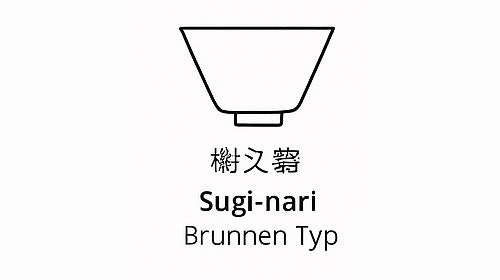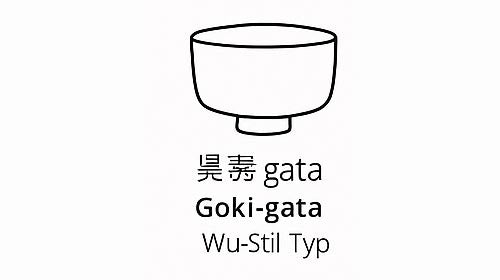At a time when many forms of Japanese tea culture are associated with precision and refinement, the Sugi-nari chawan appears almost raw, primal—and therein lies its power. Also known as the "fountain shape," this bowl is one of the oldest and most historic types of Japanese tea bowl.
“Sugi” (杉) literally means cedar, but in this context it refers more to the association with natural, vertical structure – in many traditions, however, the term is also used synonymously with the shape of the Ido-Chawan , the legendary bowl from the Japanese Muromachi and Momoyama eras .
Origin and historical development
The origins of Sugi-nari chawan date back to the 15th and 16th centuries , when Korean rice bowls were first used in Zen temples in Japan to prepare matcha. These Korean ido bowls, originally crafted without any intention of serving tea, were prized by Japanese tea masters as an expression of wabi-sabi —the aesthetic that recognizes beauty in imperfection, roughness, and simplicity.
The Sugi-nari was created as a conscious homage to these early Ido bowls: high-walled, slightly conical , with a solid, distinctively offset kōdai (base) and an inner curvature reminiscent of a deep well.
Rikyū , the great reformer of the Tea Way philosophy, particularly revered this form. In his era, it became a symbol of depth, retreat, and the removal of superfluous adornment.
Form and function
The proportions of the Sugi-nari are expressive:
-
The diameter is slightly wider than the height
-
The walls slope slightly inwards and appear thick-walled
-
The interior is shaped downwards strongly towards the middle, which gives the bowl an almost funnel-like depth
The foot ring (Kōdai) is high, angular, often asymmetrically cut and sometimes coarsely glazed – deliberately left in its artisanal irregularity.
The feel is earthy, heavy, almost archaic. You don't hold it—you embrace it like a vessel supporting a space.
Production and glaze
Sugi-nari chawan is typically made from coarsely fired clay , often in wood-fired anagama or noborigama kilns . Regions of origin such as Iga, Karatsu, or Bizen are at the forefront.
The glazes are traditionally natural ash glazes , often with:
-
Yōhen (窯変) – unpredictable firing processes
-
Kannyu (貫入) – Crackle cracks
-
Hi-iro (火色) – fiery discoloration caused by flame contact
Sometimes the outside is deliberately left unglazed, only discolored by ash rain – as in the oldest Ido bowls.
Symbolism and use
The Sugi-nari is not an "everyday bowl." It is preferably used in the tea ceremony during the autumn and winter seasons , when silence, depth, and retreat prevail. Its shape retains warmth, slows drinking, and directs the focus inward.
It is equally suitable for Koicha as well as for quiet Usucha preparations , especially in meditative ceremonies.
Drinking from it doesn't feel light or fleeting—it's an invitation to pause . Your gaze descends into the deep interior. The flavor slowly unfolds.




Leave a comment
This site is protected by hCaptcha and the hCaptcha Privacy Policy and Terms of Service apply.